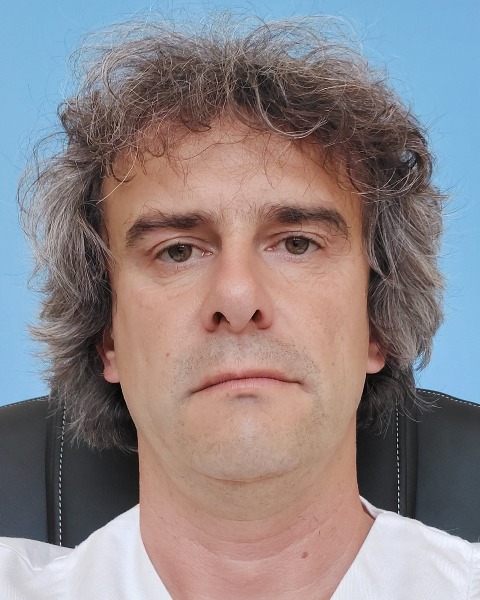Treatment of Relapsed/Refractory Myeloma
Poster Session 2
P-258: CARFILZOMIB IN RELAPSED/REFRACTORY MULTIPLE MYELOMA PATIENTS – REAL WORLD EVIDENCE – EXPERIENCES OF THE CROATIAN COOPERATIVE GROUP FOR HEMATOLOGIC DISEASES (KROHEM)
Thursday, September 28, 2023
12:30 PM - 1:30 PM EEST

Davor Galušić, PhD
attending physician
University Hospital Split
Split, Croatia
Introduction: Use of carfilzomib in treatment of multiple myeloma (MM) brought significant improvements in patient’s outcomes, predominantly in relapse/refractory (RR) settings but also in the newly diagnosed. Outcomes from clinical trials are better than outcomes reported in real-world evidence (RWE) data. Our objective was to analyse data for RR multiple myeloma patients treated with carfilzomib and to compare it with those reported in literature (both RWE and clinical trials).
Methods: A retrospective analysis of outcomes in RRMM patients treated with carfilzomib, in combination with lenalidomide and dexamethasone (KRd) or dexamethasone alone (Kd), in 12 Croatian hematology centres in the period between June 2019 and February 2023 was performed (carfilzomib available and reimbursed since June 2019).
Results: 119 patients with RR myeloma were included. Median age at the start of carfilzomib treatment for the whole group was 67 years (range 45 – 83). There were 61 male and 58 female patients. Median number of previous lines of therapies was 3 (range 2 – 8). 70 patients (59%) were previously treated with autologous stem cell transplantation (ASCT) in the first line of treatment and 3 patients also underwent allogeneic stem cell transplant. In the KRd group 84 patients (100%) were bortezomib exposed, 25 (30%) lenalidomide exposed and 23 (27%) daratumumab exposed. In the Kd group 35 patients (100%) were bortezomib and lenalidomide expose, while 25 (71%) were also daratumumab exposed. Only 12 (10%) and 10 (8%) of patients were exposed to ixazomib and pomalidome, respectively. KRd was choice of therapy in 84 patients (71%) and Kd in 35 patients (29%). In the KRd group overall response rate (better or equal to partial response; PR) was 63%, while in the Kd group response rate was 43%. Median follow up was 11 months in both groups. Median progression free survival (PFS) was 13.6 months in the KRd group and only 4 months in the Kd group. But, analyzing only patients treated with KRd in the 2nd line, median PFS was 24 months. Overall survival (OS) was 25 months in the KRd group (1 year OS 67%) and OS in the Kd group was 8 months (1 year OS 26%). 73% of patients in the KRd group had anemia, 44% neutropenia and 71% thrombocytopenia. In the Kd group, 89% had anemia, 40% neutropenia and 83% thrombocytopenia. Infective complications were reported in 49% of patients in the KRd group and 37% in the Kd group. During follow up 73 patients died (36 in the KRd and 25 in the Kd group).
Conclusions: Our analysis confirms efficacy of carfilzomib in RR MM patients with acceptable toxicities. Our results differ significantly from results reported in clinical trials. Looking at the data for KRd in 2nd line only, results are similar to those in clinical trials. These differences in patient’s outcomes are possibly due to differences in patient’s characteristics. Similar results were reported in RR MM group of patients by other RWE data.
Methods: A retrospective analysis of outcomes in RRMM patients treated with carfilzomib, in combination with lenalidomide and dexamethasone (KRd) or dexamethasone alone (Kd), in 12 Croatian hematology centres in the period between June 2019 and February 2023 was performed (carfilzomib available and reimbursed since June 2019).
Results: 119 patients with RR myeloma were included. Median age at the start of carfilzomib treatment for the whole group was 67 years (range 45 – 83). There were 61 male and 58 female patients. Median number of previous lines of therapies was 3 (range 2 – 8). 70 patients (59%) were previously treated with autologous stem cell transplantation (ASCT) in the first line of treatment and 3 patients also underwent allogeneic stem cell transplant. In the KRd group 84 patients (100%) were bortezomib exposed, 25 (30%) lenalidomide exposed and 23 (27%) daratumumab exposed. In the Kd group 35 patients (100%) were bortezomib and lenalidomide expose, while 25 (71%) were also daratumumab exposed. Only 12 (10%) and 10 (8%) of patients were exposed to ixazomib and pomalidome, respectively. KRd was choice of therapy in 84 patients (71%) and Kd in 35 patients (29%). In the KRd group overall response rate (better or equal to partial response; PR) was 63%, while in the Kd group response rate was 43%. Median follow up was 11 months in both groups. Median progression free survival (PFS) was 13.6 months in the KRd group and only 4 months in the Kd group. But, analyzing only patients treated with KRd in the 2nd line, median PFS was 24 months. Overall survival (OS) was 25 months in the KRd group (1 year OS 67%) and OS in the Kd group was 8 months (1 year OS 26%). 73% of patients in the KRd group had anemia, 44% neutropenia and 71% thrombocytopenia. In the Kd group, 89% had anemia, 40% neutropenia and 83% thrombocytopenia. Infective complications were reported in 49% of patients in the KRd group and 37% in the Kd group. During follow up 73 patients died (36 in the KRd and 25 in the Kd group).
Conclusions: Our analysis confirms efficacy of carfilzomib in RR MM patients with acceptable toxicities. Our results differ significantly from results reported in clinical trials. Looking at the data for KRd in 2nd line only, results are similar to those in clinical trials. These differences in patient’s outcomes are possibly due to differences in patient’s characteristics. Similar results were reported in RR MM group of patients by other RWE data.
